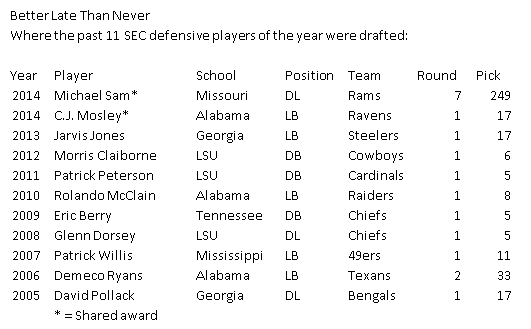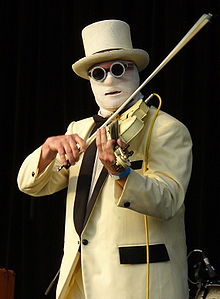Michael Sam was drafted this weekend by the St. Louis Rams. He’s the first openly gay player to be drafted by an NFL team. Back in February, I wrote:
In addition to the questions about whether Sam’s collegiate talents will be enough to allow him to flourish in the NFL, and whether a given team would welcome an openly gay team-mate in the locker room, there’s also the “Tim Tebow” problem … the team that drafts Sam will be in the unrelenting focus of the media’s publicity floodlights. Just drafting Sam would only be the start of the media’s attention. Everything to do with Sam will draw TV cameras, paparazzi, and the team’s beat writers for local media outlets.
Perhaps I misjudged the degree of ongoing interest by media outlets, as after the initial flurry of coverage, I heard very little about Michael Sam until he was actually drafted, as a photo of him kissing his boyfriend hit Twitter (and the knuckle-dragging idiots came out in droves). In February, I didn’t think Sam would be drafted, but I was wrong. However, as David Boaz points out, he was drafted far later than he would likely have been if he wasn’t “out”:
… this past weekend has reminded us that we haven’t quite achieved “opportunity to the talented.” Michael Sam was the Co-Defensive Player of the Year in the country’s strongest football conference, yet many people wondered if any NFL team would draft the league’s first openly gay player. Turns out they were right to wonder. Here’s a revealing chart published in yesterday’s Washington Post (based on data from pro-football-reference.com and published alongside this article in the print edition but apparently not online).
Every other SEC Defensive Player of the Year in the past decade, including the athlete who shared the award this year with Michael Sam, was among the top 33 picks in the draft, and only one was below number 17. Does that mean that being gay cost Michael Sam 232 places in the draft, compared to his Co-Defensive Player of the Year? Maybe not. There are doubts about Sam’s abilities at the professional level. But there are doubts about many of the players who were drafted ahead of him, in the first 248 picks this year. Looking at this chart, I think it’s hard to escape the conclusion that Sam paid a price for being openly gay. That’s why classical liberals – which in this broad sense should encompass most American libertarians, liberals, and conservatives – should continue to press for a society in which the careers are truly open to the talents. That doesn’t mean we need laws, regulations, or mandates. It means that we want to live in a society that is open to talent wherever it appears. As Scott Shackford writes at Reason, Sam’s drafting is “a significant cultural development toward a country that actually doesn’t care about individual sexual orientation. The apathetic should celebrate this development, as it is a harbinger of a future where such revelations become less and less of a big deal.” Let’s continue to look forward to a society in which it’s not news that a Jewish, Catholic, African-American, Mormon, redneck, or gay person achieves a personal goal.
Update: Draw Play Dave gets it exactly right.



 He started the independent record label Cut-Throat Records, which he used to release his own music. Among his albums was Decomposing, which he claimed could be listened to at any speed, and Bedside Companion, which he said was the first record out of Toronto to use a drum machine.
He started the independent record label Cut-Throat Records, which he used to release his own music. Among his albums was Decomposing, which he claimed could be listened to at any speed, and Bedside Companion, which he said was the first record out of Toronto to use a drum machine.

